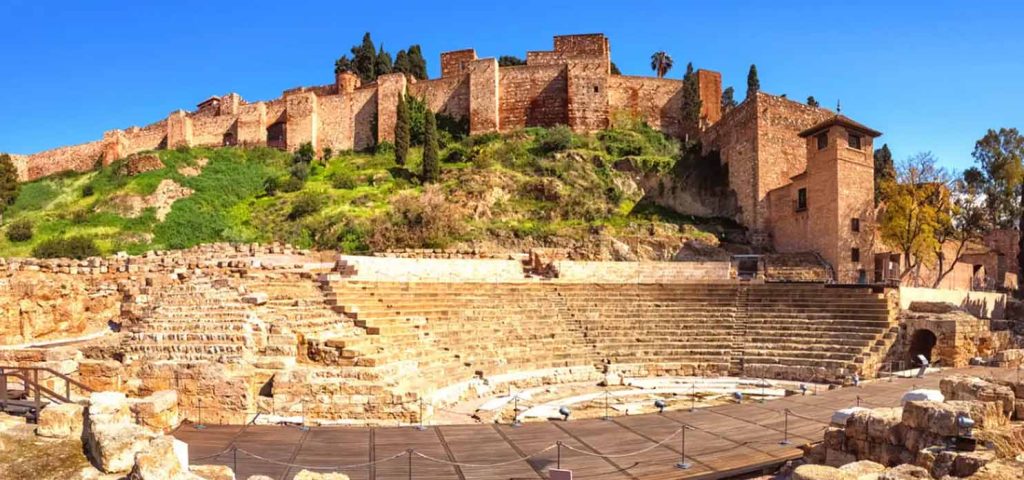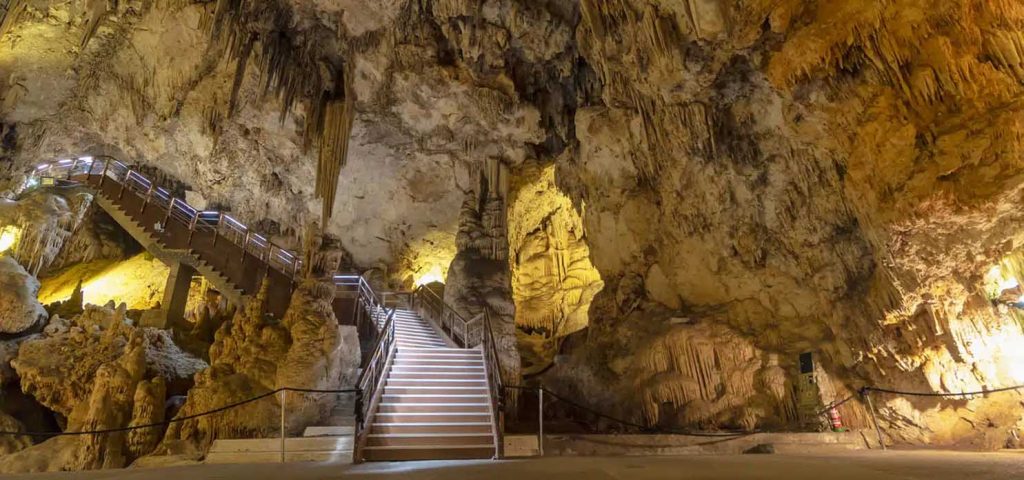When thinking of southern Spain, many people immediately picture the flamenco of Seville, the Alhambra of Granada, or the Mezquita of Córdoba. Yet, as the gateway to Andalusia, Málaga is often overlooked as just a transit stop. But did you know? Málaga is not only steeped in history and culture, it’s also the birthplace of Picasso and a sun-soaked haven where beach life, gastronomy, and art collide.With a well-planned itinerary, even a short 3-day stay can uncover the full charm of this vibrant southern city.
Before You Go: Get Ready for Your Málaga Adventure
- Transport: Málaga is served by an international airport (AGP), with direct flights from Madrid, Barcelona, London, Berlin, and other European cities. Within the city, metro, buses, and walking are all convenient—most attractions are within close proximity.
- Language: Spanish is the main language, but English is widely spoken in tourist areas.
- Currency: Euro. Bring some cash for smaller vendors, though cards are accepted in most places.
- Best Travel Seasons: Spring (March–May) and autumn (September–October) offer the best weather. Summer is hot but ideal for beach vibes.
- What to Pack: Comfortable shoes are a must (the old town has cobbled streets). Sunscreen for summer; a light jacket for cooler evenings.
Day 1: Discovering the Heart and Soul of Málaga – An Old Town Deep Dive
Morning: Málaga’s Cultural Treasures
- Málaga Cathedral (Catedral de la Encarnación)
Nicknamed La Manquita (“The One-Armed Lady”) due to its unfinished south tower, this 16th-century Renaissance-style cathedral is a city icon. Inside, admire the intricate wood-carved pulpit, pipe organs, and stained glass windows. - Picasso Museum (Museo Picasso Málaga)
Málaga is Picasso’s birthplace. This museum houses over 200 works tracing the evolution of his artistic styles. Its tranquil courtyard and proximity to the Alcazaba evoke a powerful artistic atmosphere. - Picasso’s Birthplace (Casa Natal de Picasso)
Located in Plaza de la Merced, this is where Picasso was born and spent his childhood. The museum displays personal belongings and family photos, offering a more intimate look into his early life.
Lunch: Traditional Flavors in the Old Town
Recommended Restaurant: El Pimpi
One of the most iconic eateries in Málaga, its walls are adorned with autographs from Spanish celebrities.
Must-try dishes:
- Iberico ham platter
- Smoked cod with olive oil
- House Málaga sweet wine
Afternoon: Step Back in Time

- Alcazaba of Málaga (Alcazaba de Málaga)
This Moorish fortress on a hillside was once a defensive stronghold. From the top, you’ll get sweeping views of the city and port. - Gibralfaro Castle (Castillo de Gibralfaro)
For those up for the climb, this hilltop castle offers the best panoramic views—especially stunning at sunset.
Evening: Tapas and Twilight
Head to the Atarazanas Market area where cozy taverns serve classic Spanish tapas:
- Spanish omelette (Tortilla Española)
- Spicy chorizo (Chorizo)
- Marinated olives + cold beer
Afterward, stroll to Muelle Uno, the city’s revitalized harbor with modern architecture and ambient lighting—ideal for a relaxed walk or photoshoot.
Day 2: Where Art, Beach, and Food Meet
Morning: Art Scene Highlights
- Centre Pompidou Málaga
A colorful glass cube by the harbor marks this outpost of Paris’s famous modern art museum. Inside, rotating exhibitions feature 20th and 21st-century greats like Picasso, Miró, and Chagall. - Contemporary Art Center (CAC Málaga)
Free entry, bold exhibitions. A paradise for modern art lovers and Instagrammers. The focus here is edgy, provocative contemporary Spanish art.
Lunch: Mediterranean Feast by the Water
Recommended Restaurant: Restaurante José Carlos García (Michelin One Star)
Signature dishes:
- Black rice with seafood (Arroz negro) – a rich, umami-packed dish using squid ink and the freshest catch of the day.
- Fresh scallops with orange sauce – delicately seared and paired with a zesty citrus glaze that brings out their natural sweetness.
- Málaga salad paired with Spanish white wine – a refreshing mix of potatoes, oranges, cod, and olives, ideal on a sunny afternoon, especially when enjoyed with a crisp Albariño.
Afternoon: Beach Time – La Malagueta
Pack your swimsuit, sunscreen, sunglasses, and maybe a beach towel or mat—because this is your time to unwind by the sea. La Malagueta is Málaga’s most accessible urban beach, just a short walk from the city center. It’s perfect for swimming, people-watching, or simply basking in the Andalusian sun. Don’t miss the chiringuitos (beachside cafés) for a cold drink or fried sardines. As the sky turns golden, grab a glass of sangria and watch the coastline come alive with evening charm.
Evening: Málaga After Dark
As twilight falls, head to the Soho District—once industrial, now transformed into a creative hub. Street art from international artists decorates entire building walls, giving the area a modern, edgy vibe. Explore the area’s small galleries, stop for a cocktail at a rooftop bar, or enjoy live music on an open-air terrace. If you’re in the mood to dance, finish your night at Sala Gold, a popular nightclub where Latin beats, themed events, and a buzzing crowd promise an unforgettable Andalusian night.
Day 3: A Coastal Day Trip to Remember
Recommended Excursion: Nerja Caves + Beach Town
- Morning: Drive to Nerja (about 1 hour from Málaga)
Start your day early and take a scenic coastal drive along the A-7 highway toward Nerja, a beautiful seaside town known for its crystal-clear waters and rugged cliffs. Once there, explore the Cueva de Nerja, one of the most fascinating natural wonders in Spain. The caves stretch for over 4 kilometers, featuring towering stalactites and stalagmites, prehistoric cave paintings, and even an enormous natural amphitheater where concerts are occasionally held. It’s a cool, quiet contrast to the sunny streets above and offers a glimpse into both geological and human history. - Lunch: Near the Balcón de Europa
After your subterranean adventure, head back toward the heart of Nerja and find a cozy table at one of the restaurants near the Balcón de Europa. This iconic viewpoint—built on the remnants of an old fortress—offers panoramic views of the Mediterranean Sea. Watch waves roll against the cliffs while savoring a seafood feast: think grilled sardines (espeto), garlic shrimp, or seafood paella, best enjoyed with a glass of chilled local white wine. Many spots offer outdoor seating, making it the perfect place to relax and soak in the atmosphere. - Afternoon: Leisure Time
Spend your afternoon at Playa de Burriana, Nerja’s most popular beach, known for its soft sand, calm waters, and range of facilities. Rent a sunbed, sip a cocktail at a beach bar, or take a kayak out for a short paddle along the coast. If you prefer exploring, stroll through the whitewashed old town filled with boutiques, artisan shops, and quaint cafés. This is the time to pick up local ceramics or handmade leather goods as souvenirs. Don’t forget to try a scoop of “helado artesanal” (artisan ice cream) from a local gelateria! - Evening: Return to Málaga

As the sun begins to dip, take the return journey back to Málaga, ideally timing it to catch the golden hour glow over the coastline. If energy permits, stop briefly at a lookout point for one last photo stop. Back in Málaga, treat yourself to a relaxed dinner or evening drink at Muelle Uno’s waterfront bars, reminiscing about your day’s coastal adventure. If it’s your final night, a sunset walk along the harbor is a perfect, peaceful conclusion.
Bonus Tips & Tricks
- Buy a Málaga Pass: This city card offers discounted access to major attractions including museums, historic sites, and even transportation options. If you plan on visiting several places, it quickly pays for itself and saves time at entrances. Available online or at major tourist offices.
- Meal Timing: Spaniards dine late. Lunch typically starts around 1:30 PM and can last until 3:30 PM, while dinner service rarely begins before 8:30 or 9 PM. Consider adjusting your daily itinerary accordingly—or enjoy a tapas-style snack between meals like a local.
- Safety: Málaga is generally very safe for tourists, even in the evenings. However, like in many European cities, petty theft can occur in crowded areas like markets, train stations, or during festivals. Keep your valuables close, avoid flashy items, and use cross-body bags with zippers.
- Luggage Storage: If you have a late departure or want to explore the city after check-out, consider using one of the convenient luggage storage services available at Málaga María Zambrano Station or in selected cafés and shops via apps like LuggageHero or Nannybag. This gives you freedom to enjoy your final hours without dragging a suitcase.
Three Days, a Lifetime of Memories
Málaga, bathed in golden light and kissed by the sea, wraps every traveler in warmth and wonder. Though 3 days may seem brief, with a thoughtful itinerary, you can unlock the city’s many layers—from its medieval fortresses and contemporary art hubs to beachside bliss and vibrant tapas culture.
Every stone path beneath the old city walls, every brushstroke in a gallery, every sip of sweet Málaga wine is the city’s quiet way of saying: “Stay a little longer.” And maybe, next time, you just might.